Isla Oedaldo (외달도)
11.7 Km 76167 2024-05-20
Oedaldo-gil 72, Mokpo-si, Jeollanam-do
La isla Oedaldo se encuentra a 6 km al oeste de Mokpo y ofrece hermosos paisajes naturales y playas bonitas. Nombrada como una de las 100 islas más bellas de Corea, es un lugar popular para ver impresionantes puestas de sol, especialmente para parejas. Aquí también se pueden realizar paseos por la costa. Desde el año 2003, con su designación como Centro Recreativo Turístico, se han puesto diversas instalaciones como una piscina de agua marina, tiendas de campaña y jardines para tener una experiencia vacacional más completa.
Gangnaru Minmul Jangeo (강나루 민물장어)
13.6 Km 109 2016-09-05
Hoban-ro 83-3, Mongtan-myeon, Muan-gun, Jeollanam-do.
With an excellent view of the Yeongsangang River and the surrounding plains, Gangnaru Minmul Gangeo also has a beautiful garden coordinated with natural rocks.
This restaurant has been a family business for two generations now, inheriting a special recipe.
Eel dishes marinated in a special soy sauce are deliciously grilled on charcoals.
Gangnaru Minmul was designated as a Traditional Local Food Restaurant by the provincial government.
Gamasot Naju Gomtang (가마솥나주곰탕)
13.8 Km 104 2021-03-26
1737, Gwangwang leisure-ro, Haenam-gun, Jeollanam-do
+82-61-537-5205
It is a local dish of Naju in Jeolla-do. This Korean dishes restaurant is located in Haenam-gun, Jeollanam-do. The most famous menu is beef bone soup.
Dolgorae Hoetjip (돌고래횟집)
13.8 Km 124 2021-03-26
42-13, Yeongho-gil, Haenam-gun, Jeollanam-do
+82-61-533-1450
You can enjoy sliced fresh-kill fish produced from the place of production at low prices. This restaurant's signature menu is assorted sliced raw fish. This Korean dishes restaurant is located in Haenam-gun, Jeollanam-do.
Sigol Jangteo Gukbap (시골장터국밥)
13.9 Km 111 2021-03-26
1715, Gwangwang leisure-ro, Haenam-gun, Jeollanam-do
+82-61-537-1234
Gukbap (rice soup) is a Korean-style beef broth dish containing rice. The best menu at this restaurant is Korean beef head meat and rice soup. This Korean dishes restaurant is located in Haenam-gun, Jeollanam-do.
Worlindang [Korea Quality] / 월인당 [한국관광 품질인증]
17.1 Km 8235 2023-04-13
37-11, Mojeong 1-gil, Gunseo-myeon, Yeongam-gun, Jeollanam-do
+82-61-471-7675, +82-10-6648-7916
Wolindang is a hanok stay located in “Mojeong Happy Village", Gunseo-myeon, Yeongam-gun. The name “Wolindang” means “The place where the moonlight meets the chimney smoke over the forest" in Korea. It was named as such because the locals make sure the structures are in perfect harmony with the surrounding nature. With comfortable rooms and various things to do in nature, it's a great place to stay for a family vacation. Wolindang is situated on a hill overlooking the plain. There, you will see Wolchulsan Mountain to the east, Eunjeoksan Mountain to the west, and the fields in the northern part of the village. The village is most well known for its beautiful moonlight, particularly when it cascades down from the peak of Wolchulsan Mountain. It's one of the best places in the country to see the full moon throughout the four seasons. Even the guestrooms are named after the natural features of the village, such as “Mountain Sunset” where you can enjoy the beautiful sunset, “Crescent Moon” where you can feel the calm of the moonlight, and "Plain" where you can enjoy a panoramic view of the plains. There are Oriental paintings by Baek Seungdon and Kim Seungnam in each of the rooms, and that's why the rooms are collectively called "The Wolin Museum" among the locals. As you take a walk in the village, you will see many murals, which are the paintings of the 12 different landscape views seen from Wonpungjeong Pavilion at the end of the village. The murals include some poems written by the villagers. In 2005, the owner of this place moved back to this village, his hometown, and built this traditional Korean house in a large vegetable garden right below the house where his family has lived since the time of his great-grandfather. The house has all the features of a traditional Korean house, including the “numaru”, main floored room, flat stone floor, and red clay walls. The “numaru” and “toenmaru” in particular are great places to enjoy the wind and see the clear sky. Guests can enjoy a meal or tea in the "numaru" located next to the “Plain Room”. The flat stone floor is designed for floor heating from the kitchen furnace, just like the rooms in a house were heated in the past. The kitchen furnace can be used as a BBQ or to cook sweet potatoes. The floors in the room are covered with traditional Korean paper and furnished with starched sheets and blankets. There are a number of programs with nature as the theme for the guests to enjoy as well, such as the “Tea Drinking Experience” program where you get to make and drink your own green tea and yellow tea in the traditional Korean way and “Natural Dyeing Experience” where you can dye your own handkerchief or T-shirt using natural materials such as persimmon, safflower, and tree. Other programs include the cooking class where guests get to make knife-cut noodles with adzuki beans and Korean wheat dough. There is a volleyball court in the grass yard. These traditional experience programs and the large grass yard are two of the main reasons why large families choose this place to stay overnight. As such, this is one of the most recommended guesthouses for families with children or old parents planning for a trip.
Museo de la Cerámica de Yeongam (영암도기박물관)
18.2 Km 4724 2021-03-17
Seohojeong-gil 5, Gunseo-myeon, Yeongam-gun, Jeollanam-do.
+82-61-470-6851
Situada al pie del monte Wolchulsan en Yeongam (Jeollanam-do), la Aldea Tradicional de Gurim es el centro de la cultura cerámica de Corea. Según una leyenda, Wang In y el monje Doseon de la Dinastía Baekje nacieron en esta aldea. Con sus 2.200 años de historia, la aldea alberga también el Museo de Cerámica de Yeongam, que abrió sus puertas en abril de 2008 tras la renovación del anterior Centro de Cultura Cerámica.
La sala de exhibiciones muestra la historia de la cerámica en Yeongam, desde la Cerámica de Gurim del período de Silla Unificada, hasta los trabajos de excavación en los hornos de la Dinastía Joseon. Los visitantes pueden participar en actividades interactivas de creación de cerámica, y comprar productos locales y conjuntos de té en la tienda del museo.
En la entrada del museo se sitúa el Horno Siyu Dogi (cerámica), declarado como Lugar Histórico número 338. Este horno fue recuperado tras una excavación de un equipo del Museo de la Universidad Femenina Ewha. El campo situado al lado del horno está decorado con sillas, mesas y vasijas cerámicas.
El museo alberga diversas exhibiciones que giran alrededor de la cerámica. Además, está cerca de otras atracciones turísticas como el Sitio Histórico de Wang In, el Templo Dogapsa, o el Parque Nacional del Monte Wolchulsan. La Aldea Tradicional de Gurim también alberga el Festival Cultural Wang In, que se celebra cada primavera durante la floración de los cerezos.
Muan beach hotel [Korea Quality] / 무안비치호텔 [한국관광 품질인증]
18.4 Km 4037 2020-12-11
36, Tommeori-gil, Muan-gun, Jeollanam-do
+82-10-3379-6656
Muan Beach Hotel is just in front of Topmeori Beach commanding the best view in Muan. Opening the window of the room, you can see the beach of Muan with the vast mud flat submerging and appearing according to the ebb and flow of the sea and the unobstructed scenery of Topmeori Beach. All rooms are facing the beach to have an ocean view. The rooms are composed of Suite for 2 persons, Golftel for 4 persons, Deluxe for 4 persons GRand for 5 persons, Royal for 4 persons and the pension. A double bed and a single bed are furnished in a room for 2 persons as the rooms of the hotel are more spacious than those in other ordinary hotels. The pension has 4 bedrooms, 2 bathrooms, the living roon and the kitchen.
Muan Beach Hotel is exactly 3 minutes away from Muan International Airport and Muan CC. It takes about 20 minutes to Muan Red Clay Mud Flat, about 30 minutes to Hoesan Baengnyeonji Reservoir and about 15 minutes to Nuan Small Octopus Alley. It is easier and better to plan your trip to visit not only Nuan but also Mokpo and Sinan region. It takes about 40 minutes to Mokpo Modern History District, about 30 minutes to Aphaedo Island, the emerging new center of Sinan County, and about an hour to Jeungdo Island where tTaepyeong Salt Pond and the Salt Museum are located.
Aldea del Dr. Wangin de Yeongam (영암 왕인박사마을)
18.6 Km 34129 2020-09-01
Gurim-ro 43-14, Gunseo-myeon, Yeongam-gun, Jeollanam-do.
+82-61-472-0939
Esta aldea tiene una historia de más de 2.200 años, ya que fue el lugar de origen del Dr. Wangin, un estudioso que llevó sus conocimientos de las letras chinas y el confucionismo hasta Japón. Hay tantas cosas que ver en la aldea como larga es su historia. Caminando por el pueblo se pueden ver casas con tejados, pabellones antiguos. La aldea en sí parece un museo al aire libre. En el centro se encuentra el Museo de Alfarería de Yeongam, donde se pueden ver diversas piezas de cerámica en exposición y hacer actividades. Es un lugar turístico famoso de la provincia Jeollanam-do, que incluso cuenta con muchas opciones de alojamiento en casas tradicionales. El Parque Nacional del Monte Wolchulsan y el Sitio Histórico del Dr. Wangin se encuentran en las cercanías, por lo que también vale la pena la visita.
Festival Cultural Wangin de Yeongam (영암왕인문화축제)
19.1 Km 4001 2024-03-12
Wangin-ro 440, Gunseo-myeon, Yeongam-gun, Jeollanam-do
061-470-2346
Este festival celebra los logros del Dr. Wangin, que viajó a Japón hace unos 1.600 años para extender la cultura y arte de Corea. Sus enseñanzas incluían los "Mil Caracteres" (una cartilla con caracteres chinos) y los Anales (Discursos) de Confucio. Wang enseñó composición escrita a los japoneses, desarrollando unos cimientos educativos que influenciaron enormemente todas las áreas de estudio, incluyendo las ciencias sociales, políticas, económicas, culturales y artísticas. Este festival se celebra en el bonito paisaje del Parque Nacional del Monte Wolchulsan, y los logros del Dr. Wangin son conmemorados con diversas actuaciones y eventos culturales. El festival tiene lugar en abril, cuando las flores de cerezo están en su mayor esplendor.
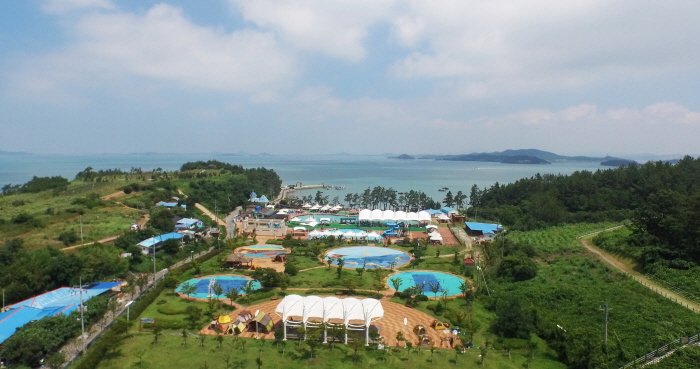

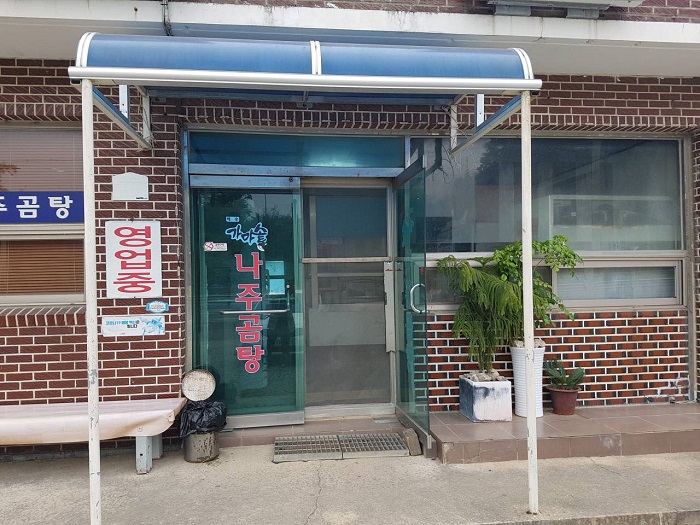
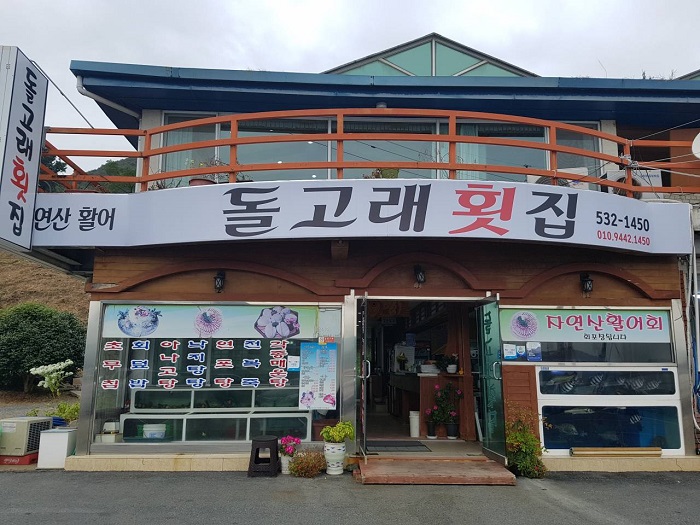

![Worlindang [Korea Quality] / 월인당 [한국관광 품질인증]](http://tong.visitkorea.or.kr/cms/resource/69/2574169_image2_1.jpg)
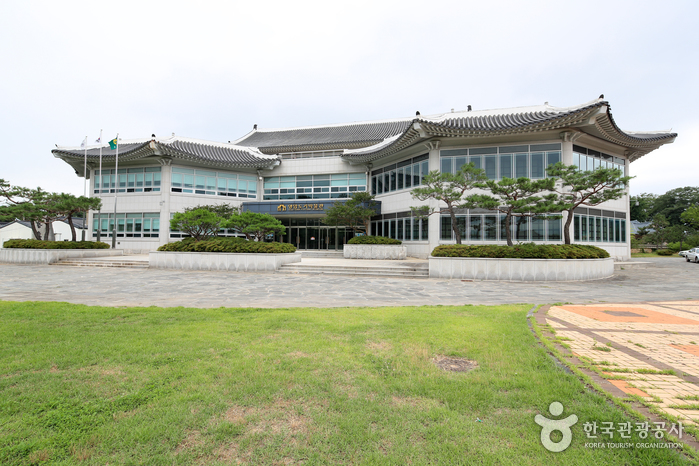
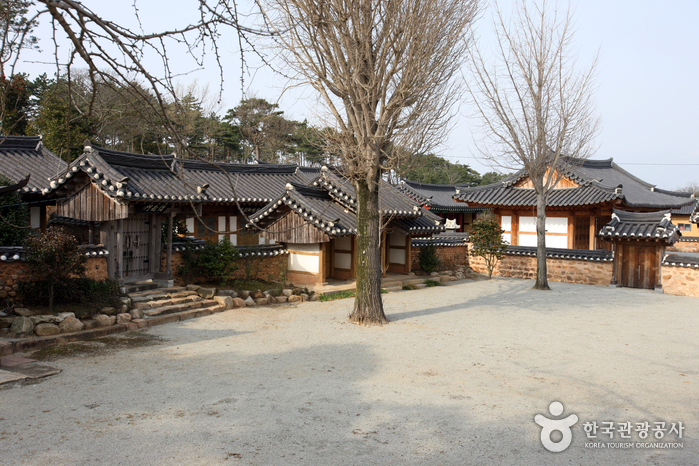
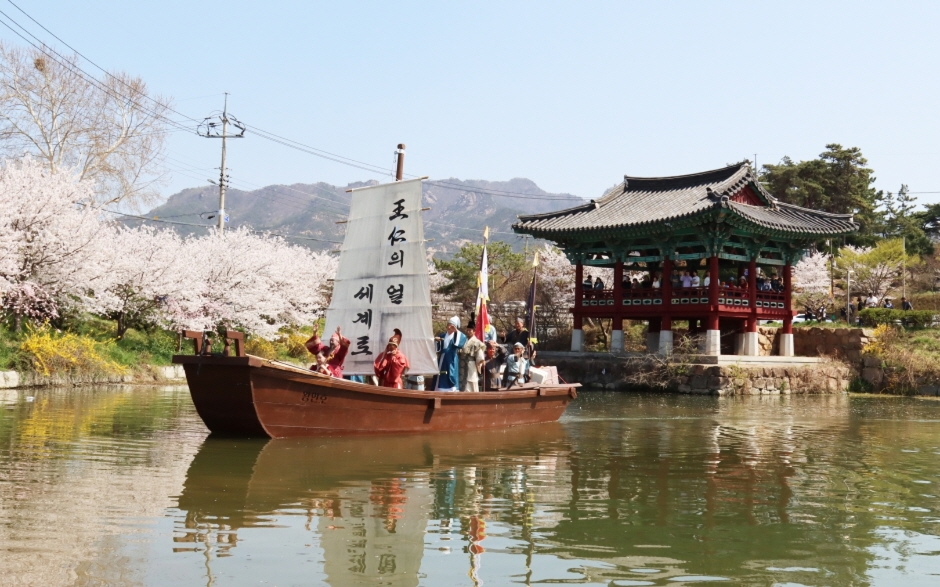
 Español
Español
 한국어
한국어 English
English 日本語
日本語 中文(简体)
中文(简体) Deutsch
Deutsch Français
Français Русский
Русский